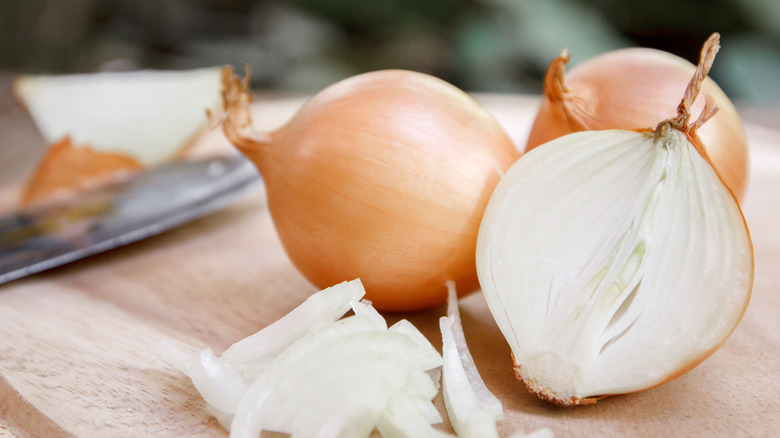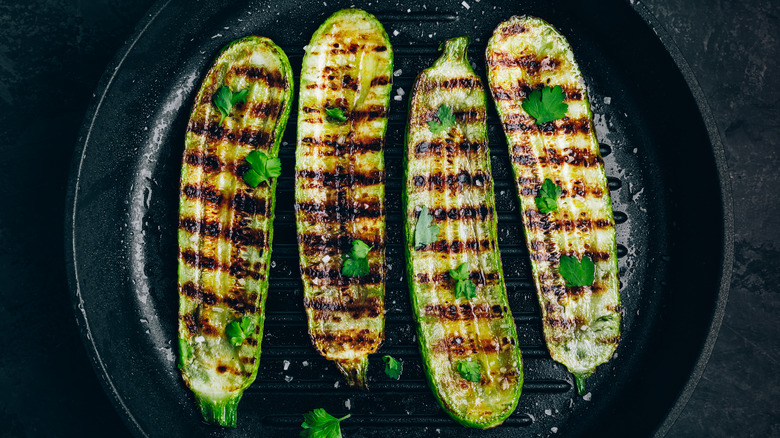What Is The Difference Between Cutting Crosswise And Lengthwise?
Mastering knife skills isn't just about learning how to properly mince, cube, and julienne. Half of the challenge is simply understanding the lingo, and such is the case with cutting produce crosswise versus lengthwise. While the methods might seem arbitrary, it matters for certain preparations which way fruit and veg are oriented for the cut.
Cutting one crosswise involves slicing it along its width (or contrary to its length, if you like), whereas cutting lengthwise involves producing long slices. For lengthy items like carrots or bananas, it's easier to visualize this distinction. For example, cutting a carrot crosswise will produce short, coin-like rounds compared to cutting a carrot lengthwise, which will make strips. Easy enough to execute, right? Well, not quite — at least not when it comes to globe-shaped produce.
For round goods such as tomatoes, onions, or citrus, the best way to understand length is by regarding the bit with the stem as the fruit or vegetable's base. On an onion, it's best to visualize it by tracing an imaginary line from the root to its bud, and for lemons or limes, from one nubby end to the other. Cutting rounded fruits and vegetables crosswise means cutting perpendicular to this imaginary line and vice versa.
When to use crosswise cuts versus lengthwise cuts
More often than not, a recipe will clearly state whether or not produce should be cut horizontally (crosswise) or vertically (lengthwise). However, if there are no clearly indicated suggestions, it might be up to you to make that call for yourself. Although it can seem like an overwhelming task, the reality is that while each cut will produce a different result, the difference will be ever so slight.
That said, generally, crosswise cuts are best reserved for recipes that require raw produce, a rounded aesthetic, or thick chunks. For this, think avocado sections and tomatoes slices that will top sandwiches or Kaiser rolls, thick slices of onion rings destined for breading and frying, or carrot coins for a chunky stew. Lengthwise cuts are ideal for vegetables like eggplant and zucchini that will end up in a casserole; this not only increases the surface area of slices but requires fewer cuts, making for faster assembly.
For layered veg like onions, you may even hear folks describe the cut as "with" or "against" the grain. A crosswise or cut against the onion layers will release more acid and give cuts that onion profile look, perfect for burgers, but if you're trying to carmelize them, a lengthwise "with the grain" cut should give them less of an edge. Getting tuned into the difference between crosswise and lengthwise and when to use each will definitely benefit you in the long run!

